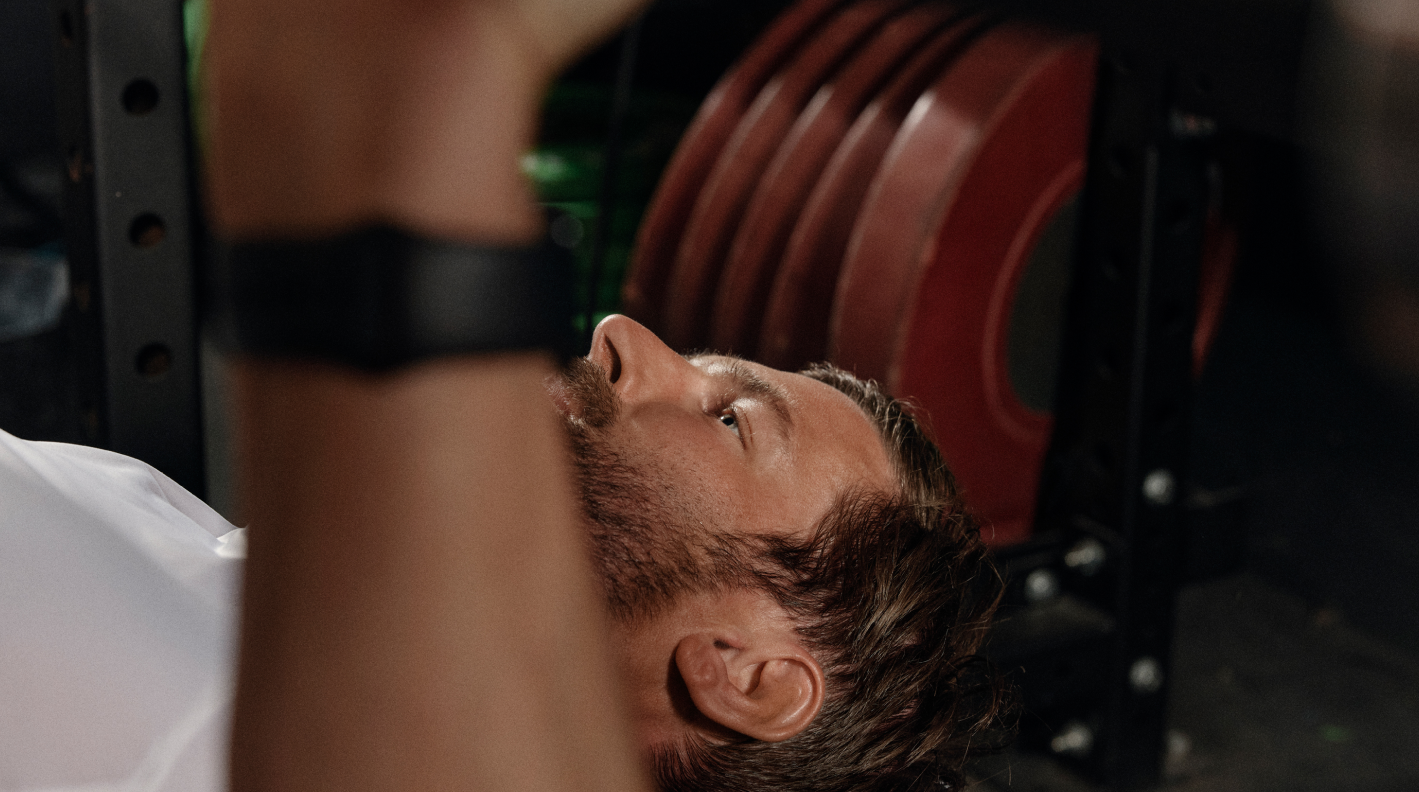Can the sauna actually help you lose weight? What to know before you sweat

Key takeaways
- Saunas mainly cause temporary water weight loss, not fat loss, but can support long-term results by improving recovery, reducing stress, and aiding performance.
- Regular sauna use benefits cardiovascular health, circulation, and cognitive function by promoting heat adaptation and boosting key hormones and proteins.
- Aim for 20-minute sessions, 1–2 times per week to start, increasing frequency as tolerance builds — always rehydrate and avoid alcohol for safety and best results.
Saunas have long been utilised for their soothing and rejuvenating properties, but their benefits extend far beyond mere relaxation, especially when used post-workout.
Stepping into a sauna after a strenuous exercise session can amplify the rewards of your workout routine in numerous ways.
From aiding in muscle recovery to promoting detoxification, saunas offer a host of advantages that can enhance your overall well-being and fitness journey.
Let's delve deeper into the benefits of incorporating sauna sessions into your regimen.
Can saunas help you lose weight?
The answer to this question isn't really straightforward.
Although saunas can provide weight loss benefits, they don't typically last. As you sweat in the sauna, you lose water weight, which can lead to a temporary reduction in body weight [1].
But losing water weight isn't the same as losing body fat, and your weight will likely go back up once you rehydrate.
Having said that, using the sauna for weight loss isn't completely useless. Not only does it burn calories, but it can have other health benefits that can boost your weight loss efforts (more on this shortly).
However, using a sauna for weight loss is unlikely to lead to significant weight loss unless you combine it with a balanced diet and consistent exercise routine.
Can saunas help you burn fat?
Long story short, no, using a sauna won't directly burn fat.
As we mentioned before, the weight loss observed after a sauna session is temporary and regained upon rehydration.
However, saunas can have indirect benefits that may support weight loss.
One way that sauna therapy can promote fat-burning is by helping your body recover post-workout.
Using the sauna can help your muscles relax and recover after exercise, which can make your workout routine more sustainable and, in turn, make it easier to shed pounds. After all, exercise is a key piece of the weight loss puzzle.
The high temperatures can also increase your heart rate in a way that is similar to moderate exercise [3]. This can benefit your heart health and control high blood pressure, improving your exercise abilities.
Lastly, saunas are a great way to reduce cortisol, a hormone closely linked to fat storage and weight gain, and improve the quality of your sleep.
The truth is that recovery is crucial for a healthy lifestyle, and also for a successful weight loss and body recomposition journey.
Taking time to rest, whether by going to the sauna, taking an active rest day or going to a yoga class, helps to prevent muscle fatigue and injury, while improving your performance at the gym. Win, win.
How many calories can you burn during a sauna session?
Calorie burn during a sauna session will vary from person to person, depending on factors like body weight, the temperature of the sauna, and session duration [2].
On average, a person might burn 100-300 calories during a 30-minute sauna session.
However, it's important to keep in mind that the main purpose of a sauna is relaxation and recovery, not weight loss or caloric burn.
Other health benefits of saunas
Saunas raise our core temp and trigger a cascade of thermoregulatory processes that provide a broad range of benefits from athletic performance, cardiovascular health, mental health, and sleep [3][4][5][6][7].
Saunas have also been linked with lower all-cause mortality rates and dementia [5][8]. Let’s take a closer look at the potential benefits:
Endocrine effects
- Noradrenaline: Helps lower sympathetic nervous system activity over time, which favours improvements in blood pressure and heart rate variability.
- Beta-endorphin: These naturally occurring opioids facilitate a feeling of well-being and decreased stress.
- Leptin hormone: This hormone mediates “hunger satiety” and may promote weight loss.
- Prolactin: Supports brain cell growth, although it may have mixed effects on men's health.
- Cortisol: This stress hormone fluctuates with sauna use, although the mechanism behind this is unclear.
- Sex hormones: Follicle-stimulating hormone (FSH), luteinizing hormone (LH), testosterone, and oestrogen levels remain unchanged [9]
Cardiovascular effects
- Cardiac function: Repetitive sauna treatment can help improve heart health and exercise tolerance, particularly in those with congestive cardiac failure.
- Blood vessel function: Saunas may reduce arterial stiffness and lower blood pressure, placing less stress on arteries [10].
Cognitive effects
- Sleep quality: This is yet to be studied robustly but many report improved sleep after sauna use; this may be due to temperature regulation post-sauna [7].
- Cognitive performance: Saunas can boost brain-derived neurotrophic factor (BDNF), which improves brain plasticity and neuron survival and growth [11].
- Neurodegenerative disease: The release of heat shock proteins (HSPs) that happens during sauna sessions can improve resilience to stress along with BDNF that supports improved neurogenesis [10].
Types of saunas
Most of the studies on benefits have been on dry saunas and there’s only been a couple of studies that have made a direct comparison so we generally lean towards the dry heat [11].
For optimal temp, dry saunas should be 80-100°C, whereas steam rooms can be lower at 38-49°C because the humidity saturation makes it more difficult for our body to cool via sweating.
Infrared saunas are also effective at a lower temperature because it’s the IR spectrum that penetrates our dermis and generates heat to stimulate sweating.
However, most IR saunas also have a heating element as many simply expect a hot room.
The jury is still out on whether they're superior but it's important to note IR is different to red light therapy (mostly wavelength differences) but they can be combined.
Timing and frequency
Post-exercise sauna bathing has been shown to improve explosive strength and muscle soreness, likely due to increases in growth hormone and heat shock proteins [12].
Most studies have been on saunas longer than 15 mins so we recommend aiming for 20 mins. However, this isn't always realistic after a big training session.
Cardiovascular and all-cause mortality benefits are “dose-dependent” which means: more = better. 1-2 sessions per week is a great place to start but increasing benefits have been displayed up to 4-7 sessions per week [13].
Hot tips
A few things to keep in mind when it comes to saunas.
Low and slow
For those getting into it, we suggest short 5-10 minute bursts on the lower bench (it’s cooler) before building tolerance and endurance to sit on the top bench (and even stand!).
Listen to your body; there's no need to cook yourself until you’re ready.
Rehydrate with electrolytes
We really have to be disciplined as we can lose around 1L in a 15-20 minute sauna depending on the temperature [14].
Warm water and Celtic sea salt are a great combo to replenish electrolytes but I suggest Hyro for something more palatable.
Sauna hat
A tall, wool hat will keep your head cooler to avoid overheating too fast and allow you to sustain longer periods that increase your core body temp (which is the goal).
Booze
Saunas and booze simply don’t mix. So much so, that a vast majority of sauna deaths are related to alcohol intoxication [15].
Hangovers
There's little evidence to suggest that saunas have a measurable benefit.
More than 90% of ethanol is broken down in the liver with a tiny fraction excreted via sweat and there is the risk of further exacerbating dehydration but there is a lived n=1 effect so we recommend doing one post-excess [16].
Finding the balance
For many of us who are time-poor, it’s great to jump into the sauna to unwind after a long week, but it isn't a substitute for strength and conditioning training, which is why we suggest stacking it on top of training.
Keen to learn more about healthy living, weight loss, and body recomposition? At Compound, we’re dedicated to helping you live better, for longer.
Our programme combines medical treatments, diagnostics, prescriber support, and personalised nutrition and exercise plans — so we can help men across the UK unlock body recomposition.
- Up to 15% weight loss with clinically-backed treatments
- Lose fat and gain muscle with customised diet and movement plans
- Track metrics and progress within the Compound app
Sound like the right next step in your health journey? Join our waitlist and we’ll keep you updated.
Saunas have long been utilised for their soothing and rejuvenating properties, but their benefits extend far beyond mere relaxation, especially when used post-workout.
Stepping into a sauna after a strenuous exercise session can amplify the rewards of your workout routine in numerous ways.
From aiding in muscle recovery to promoting detoxification, saunas offer a host of advantages that can enhance your overall well-being and fitness journey.
Let's delve deeper into the benefits of incorporating sauna sessions into your regimen.
Can saunas help you lose weight?
The answer to this question isn't really straightforward.
Although saunas can provide weight loss benefits, they don't typically last. As you sweat in the sauna, you lose water weight, which can lead to a temporary reduction in body weight [1].
But losing water weight isn't the same as losing body fat, and your weight will likely go back up once you rehydrate.
Having said that, using the sauna for weight loss isn't completely useless. Not only does it burn calories, but it can have other health benefits that can boost your weight loss efforts (more on this shortly).
However, using a sauna for weight loss is unlikely to lead to significant weight loss unless you combine it with a balanced diet and consistent exercise routine.
Can saunas help you burn fat?
Long story short, no, using a sauna won't directly burn fat.
As we mentioned before, the weight loss observed after a sauna session is temporary and regained upon rehydration.
However, saunas can have indirect benefits that may support weight loss.
One way that sauna therapy can promote fat-burning is by helping your body recover post-workout.
Using the sauna can help your muscles relax and recover after exercise, which can make your workout routine more sustainable and, in turn, make it easier to shed pounds. After all, exercise is a key piece of the weight loss puzzle.
The high temperatures can also increase your heart rate in a way that is similar to moderate exercise [3]. This can benefit your heart health and control high blood pressure, improving your exercise abilities.
Lastly, saunas are a great way to reduce cortisol, a hormone closely linked to fat storage and weight gain, and improve the quality of your sleep.
The truth is that recovery is crucial for a healthy lifestyle, and also for a successful weight loss and body recomposition journey.
Taking time to rest, whether by going to the sauna, taking an active rest day or going to a yoga class, helps to prevent muscle fatigue and injury, while improving your performance at the gym. Win, win.
How many calories can you burn during a sauna session?
Calorie burn during a sauna session will vary from person to person, depending on factors like body weight, the temperature of the sauna, and session duration [2].
On average, a person might burn 100-300 calories during a 30-minute sauna session.
However, it's important to keep in mind that the main purpose of a sauna is relaxation and recovery, not weight loss or caloric burn.
Other health benefits of saunas
Saunas raise our core temp and trigger a cascade of thermoregulatory processes that provide a broad range of benefits from athletic performance, cardiovascular health, mental health, and sleep [3][4][5][6][7].
Saunas have also been linked with lower all-cause mortality rates and dementia [5][8]. Let’s take a closer look at the potential benefits:
Endocrine effects
- Noradrenaline: Helps lower sympathetic nervous system activity over time, which favours improvements in blood pressure and heart rate variability.
- Beta-endorphin: These naturally occurring opioids facilitate a feeling of well-being and decreased stress.
- Leptin hormone: This hormone mediates “hunger satiety” and may promote weight loss.
- Prolactin: Supports brain cell growth, although it may have mixed effects on men's health.
- Cortisol: This stress hormone fluctuates with sauna use, although the mechanism behind this is unclear.
- Sex hormones: Follicle-stimulating hormone (FSH), luteinizing hormone (LH), testosterone, and oestrogen levels remain unchanged [9]
Cardiovascular effects
- Cardiac function: Repetitive sauna treatment can help improve heart health and exercise tolerance, particularly in those with congestive cardiac failure.
- Blood vessel function: Saunas may reduce arterial stiffness and lower blood pressure, placing less stress on arteries [10].
Cognitive effects
- Sleep quality: This is yet to be studied robustly but many report improved sleep after sauna use; this may be due to temperature regulation post-sauna [7].
- Cognitive performance: Saunas can boost brain-derived neurotrophic factor (BDNF), which improves brain plasticity and neuron survival and growth [11].
- Neurodegenerative disease: The release of heat shock proteins (HSPs) that happens during sauna sessions can improve resilience to stress along with BDNF that supports improved neurogenesis [10].
Types of saunas
Most of the studies on benefits have been on dry saunas and there’s only been a couple of studies that have made a direct comparison so we generally lean towards the dry heat [11].
For optimal temp, dry saunas should be 80-100°C, whereas steam rooms can be lower at 38-49°C because the humidity saturation makes it more difficult for our body to cool via sweating.
Infrared saunas are also effective at a lower temperature because it’s the IR spectrum that penetrates our dermis and generates heat to stimulate sweating.
However, most IR saunas also have a heating element as many simply expect a hot room.
The jury is still out on whether they're superior but it's important to note IR is different to red light therapy (mostly wavelength differences) but they can be combined.
Timing and frequency
Post-exercise sauna bathing has been shown to improve explosive strength and muscle soreness, likely due to increases in growth hormone and heat shock proteins [12].
Most studies have been on saunas longer than 15 mins so we recommend aiming for 20 mins. However, this isn't always realistic after a big training session.
Cardiovascular and all-cause mortality benefits are “dose-dependent” which means: more = better. 1-2 sessions per week is a great place to start but increasing benefits have been displayed up to 4-7 sessions per week [13].
Hot tips
A few things to keep in mind when it comes to saunas.
Low and slow
For those getting into it, we suggest short 5-10 minute bursts on the lower bench (it’s cooler) before building tolerance and endurance to sit on the top bench (and even stand!).
Listen to your body; there's no need to cook yourself until you’re ready.
Rehydrate with electrolytes
We really have to be disciplined as we can lose around 1L in a 15-20 minute sauna depending on the temperature [14].
Warm water and Celtic sea salt are a great combo to replenish electrolytes but I suggest Hyro for something more palatable.
Sauna hat
A tall, wool hat will keep your head cooler to avoid overheating too fast and allow you to sustain longer periods that increase your core body temp (which is the goal).
Booze
Saunas and booze simply don’t mix. So much so, that a vast majority of sauna deaths are related to alcohol intoxication [15].
Hangovers
There's little evidence to suggest that saunas have a measurable benefit.
More than 90% of ethanol is broken down in the liver with a tiny fraction excreted via sweat and there is the risk of further exacerbating dehydration but there is a lived n=1 effect so we recommend doing one post-excess [16].
Finding the balance
For many of us who are time-poor, it’s great to jump into the sauna to unwind after a long week, but it isn't a substitute for strength and conditioning training, which is why we suggest stacking it on top of training.
Keen to learn more about healthy living, weight loss, and body recomposition? At Compound, we’re dedicated to helping you live better, for longer.
Our programme combines medical treatments, diagnostics, prescriber support, and personalised nutrition and exercise plans — so we can help men across the UK unlock body recomposition.
- Up to 15% weight loss with clinically-backed treatments
- Lose fat and gain muscle with customised diet and movement plans
- Track metrics and progress within the Compound app
Sound like the right next step in your health journey? Join our waitlist and we’ll keep you updated.
- https://www.ncbi.nlm.nih.gov/pmc/articles/PMC6360547/
- https://www.ncbi.nlm.nih.gov/pmc/articles/PMC4295591/
- https://www.sciencedirect.com/science/article/abs/pii/S1440244006001393
- https://link.springer.com/article/10.1007/s00421-020-04541-z?ArticleAuthorAssignedToIssue_20210205
- https://pubmed.ncbi.nlm.nih.gov/25705824/
- https://www.sciencedirect.com/science/article/abs/pii/S1744388107000850
- https://www.sciencedirect.com/science/article/abs/pii/S0965229919300998
- https://pubmed.ncbi.nlm.nih.gov/27932366/
- https://www.sciencedirect.com/science/article/abs/pii/S2451965019301048
- https://www.sciencedirect.com/science/article/pii/S0531556521002916
- https://www.ncbi.nlm.nih.gov/pmc/articles/PMC4042662/
- https://www.termedia.pl/A-post-exercise-infrared-sauna-session-improves-recovery-of-neuromuscular-performance-and-muscle-soreness-after-resistance-exercise-training,78,47765,1,1.html
- https://jamanetwork.com/journals/jamainternalmedicine/fullarticle/2130724
- https://www.ncbi.nlm.nih.gov/pmc/articles/PMC6360547/
- https://www.ncbi.nlm.nih.gov/pmc/articles/PMC6097023/
- https://wires.onlinelibrary.wiley.com/doi/epdf/10.1002/wfs2.1340












